
BACK TO GALLERY
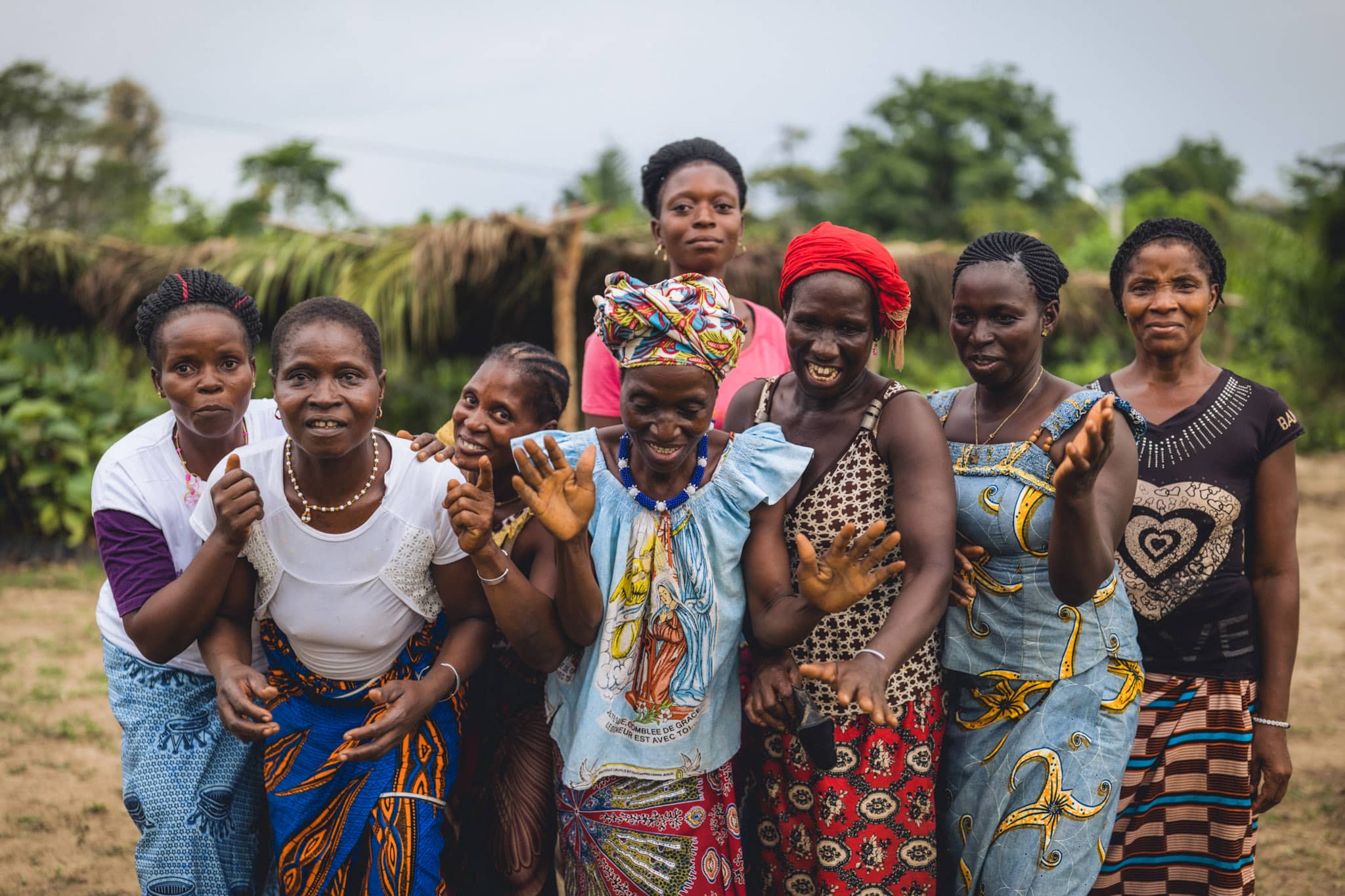
In Côte d'Ivoire, NGOs have been supporting cocoa producing-communities in their transitions from open-sun agriculture to agroforestry. Women associations have been put together to take care of tree nurseries, the production of which will then be planted in the cocoa plots to provide much need shade to suffocating cocoa trees.
Photo by Emile DOMINE for the World Bank
Panasonic S5 & 24-105 f/4
24mm - f/4 - 4 sec. - ISO 2000
© AADO MEDIA 2021
In Côte d'Ivoire, NGOs have been supporting cocoa producing-communities in their transitions from open-sun agriculture to agroforestry. Women associations have been put together to take care of tree nurseries, the production of which will then be planted in the cocoa plots to provide much need shade to suffocating cocoa trees.
Photo by Emile DOMINE for the World Bank
Panasonic S5 & 24-105 f/4
24mm - f/4 - 4 sec. - ISO 2000
© AADO MEDIA 2021
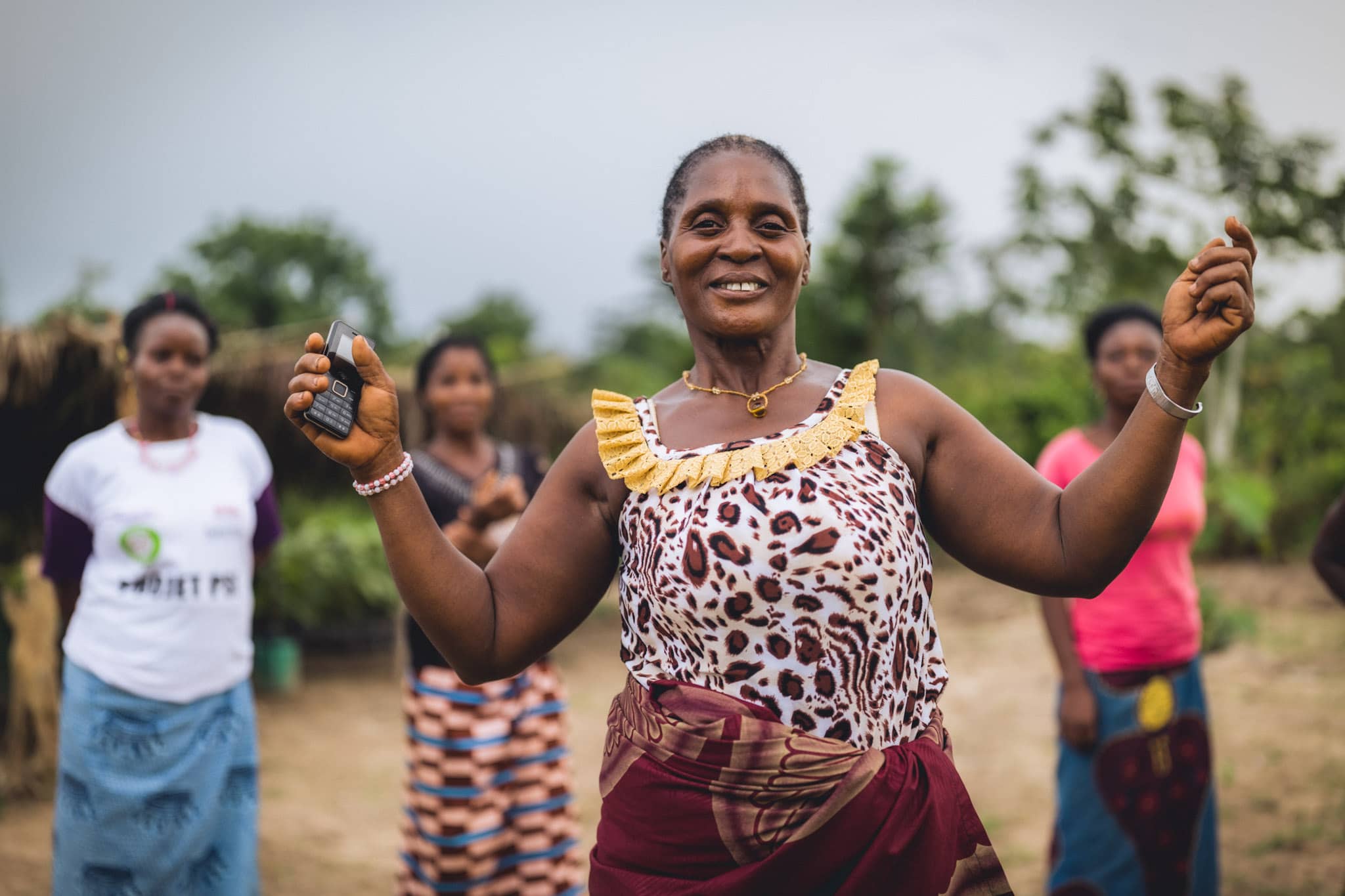
Cocoa producers’ wifes are proud to contribute to the transition to agroforestry, and to help their community face the challenges climate change puts their way.
Photo by Emile DOMINE for the World Bank
Panasonic S1H + Sigma Art 40mm f/1.4
f/1.4 - 1/640 s - ISO 200
© AADO MEDIA 2021
Cocoa producers’ wifes are proud to contribute to the transition to agroforestry, and to help their community face the challenges climate change puts their way.
Photo by Emile DOMINE for the World Bank
Panasonic S1H + Sigma Art 40mm f/1.4
f/1.4 - 1/640 s - ISO 200
© AADO MEDIA 2021
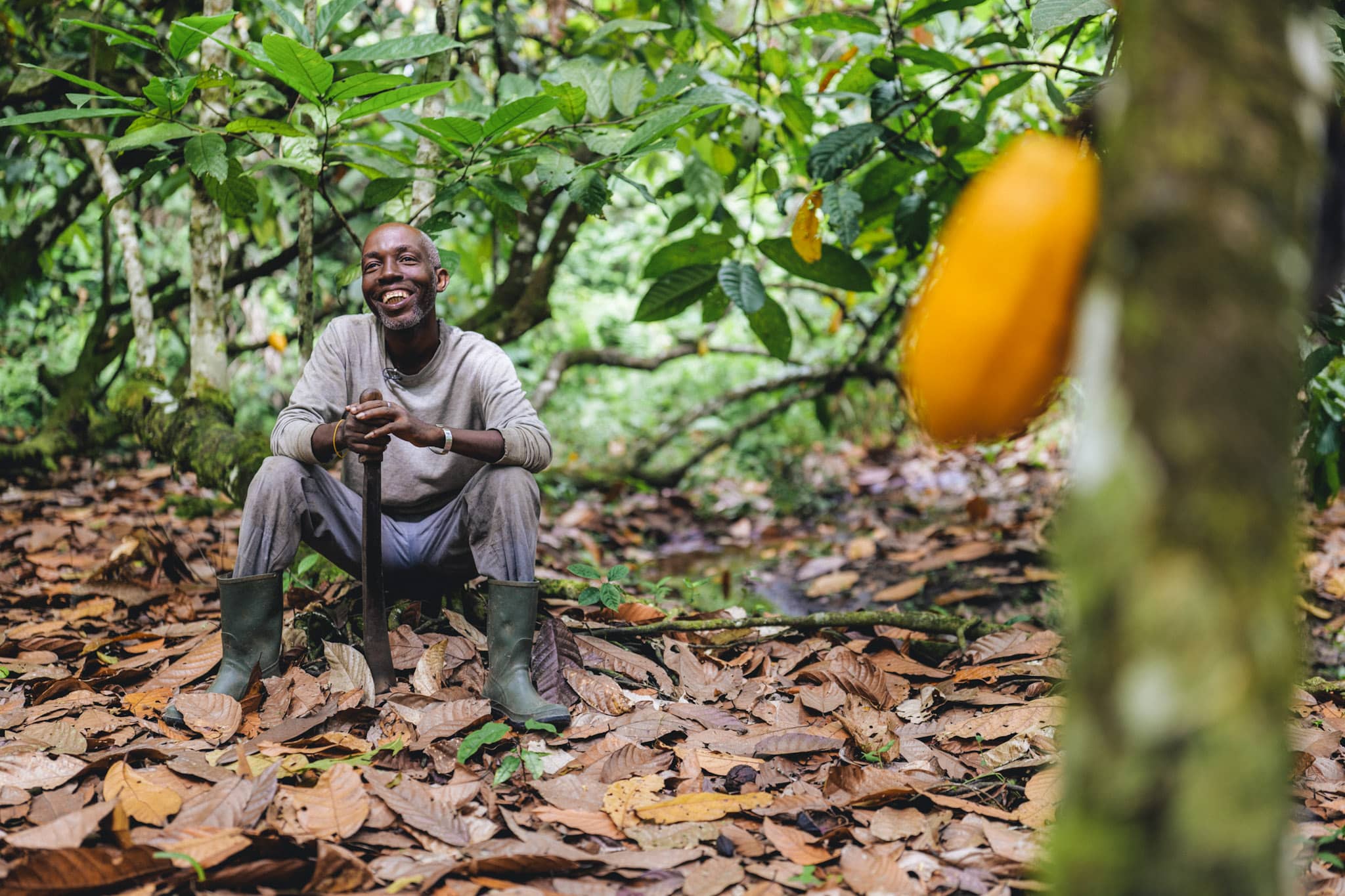
A Ivorian cocoa producer recounts how he cut down hectares of primary forest to plant cocoa in the Nawa region of Côte d’Ivoire. Now that the forests are long gone, yields are dropping and farmers must find solutions.
Photo by Emile DOMINE for the World Bank
Panasonic S1H + Sigma Art 40mm f/1.4
f/1.4 - 1/400 s - ISO 200
© AADO MEDIA 2021
A Ivorian cocoa producer recounts how he cut down hectares of primary forest to plant cocoa in the Nawa region of Côte d’Ivoire. Now that the forests are long gone, yields are dropping and farmers must find solutions.
Photo by Emile DOMINE for the World Bank
Panasonic S1H + Sigma Art 40mm f/1.4
f/1.4 - 1/400 s - ISO 200
© AADO MEDIA 2021
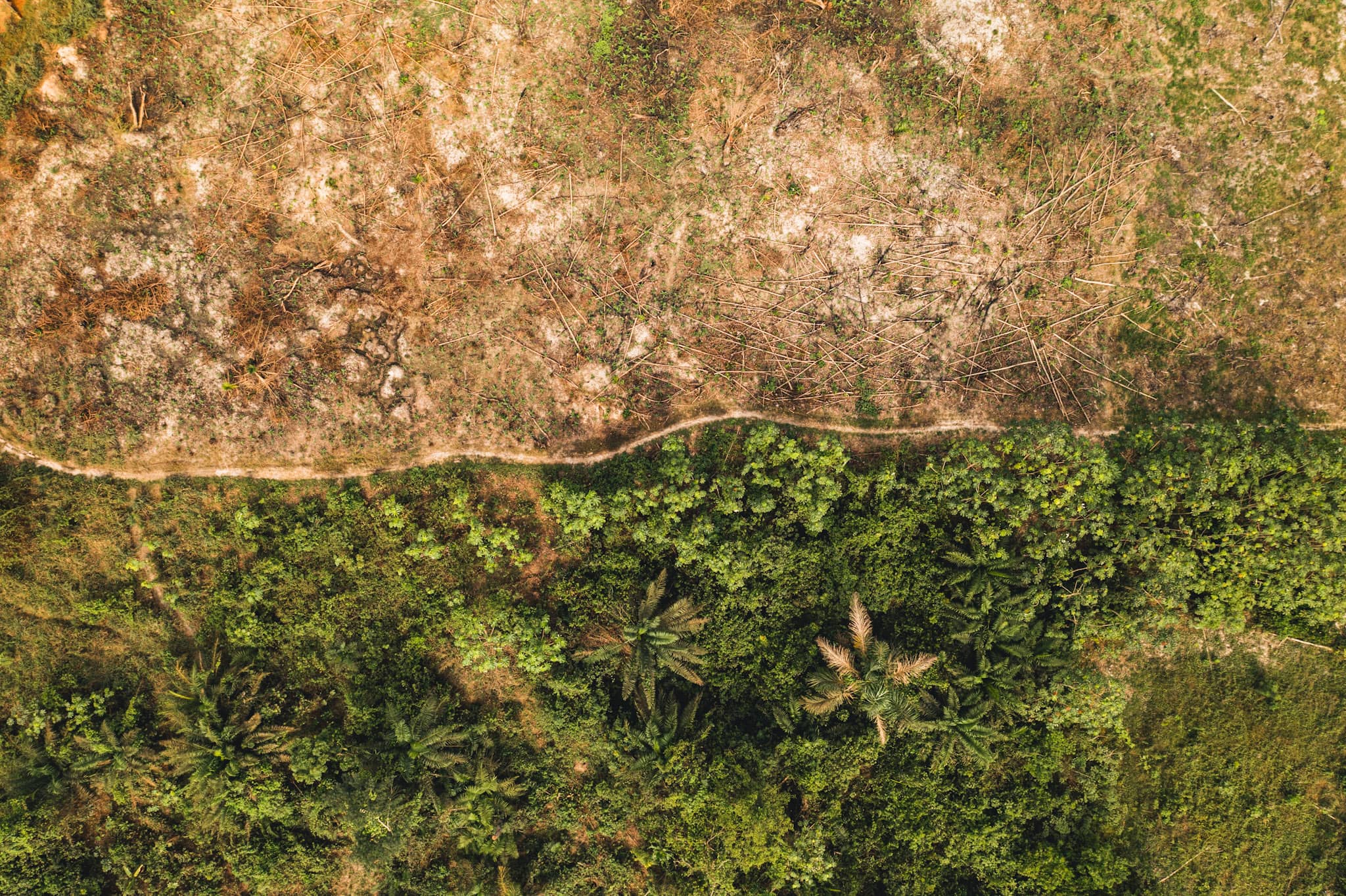
In Côte d’Ivoire, years of deforestation and intensive cocoa agriculture have led to depleted soils. After 10-20 years of production, plots are abandoned and left as agricultural wastelands for a few decades before they can be cut down and cultivated again.
Photo by Emile DOMINE for the World Bank
DJI Mavic 2 Pro + PolarPro VND
f/4 - 1/80 s - ISO 100
© AADO MEDIA 2021
In Côte d’Ivoire, years of deforestation and intensive cocoa agriculture have led to depleted soils. After 10-20 years of production, plots are abandoned and left as agricultural wastelands for a few decades before they can be cut down and cultivated again.
Photo by Emile DOMINE for the World Bank
DJI Mavic 2 Pro + PolarPro VND
f/4 - 1/80 s - ISO 100
© AADO MEDIA 2021
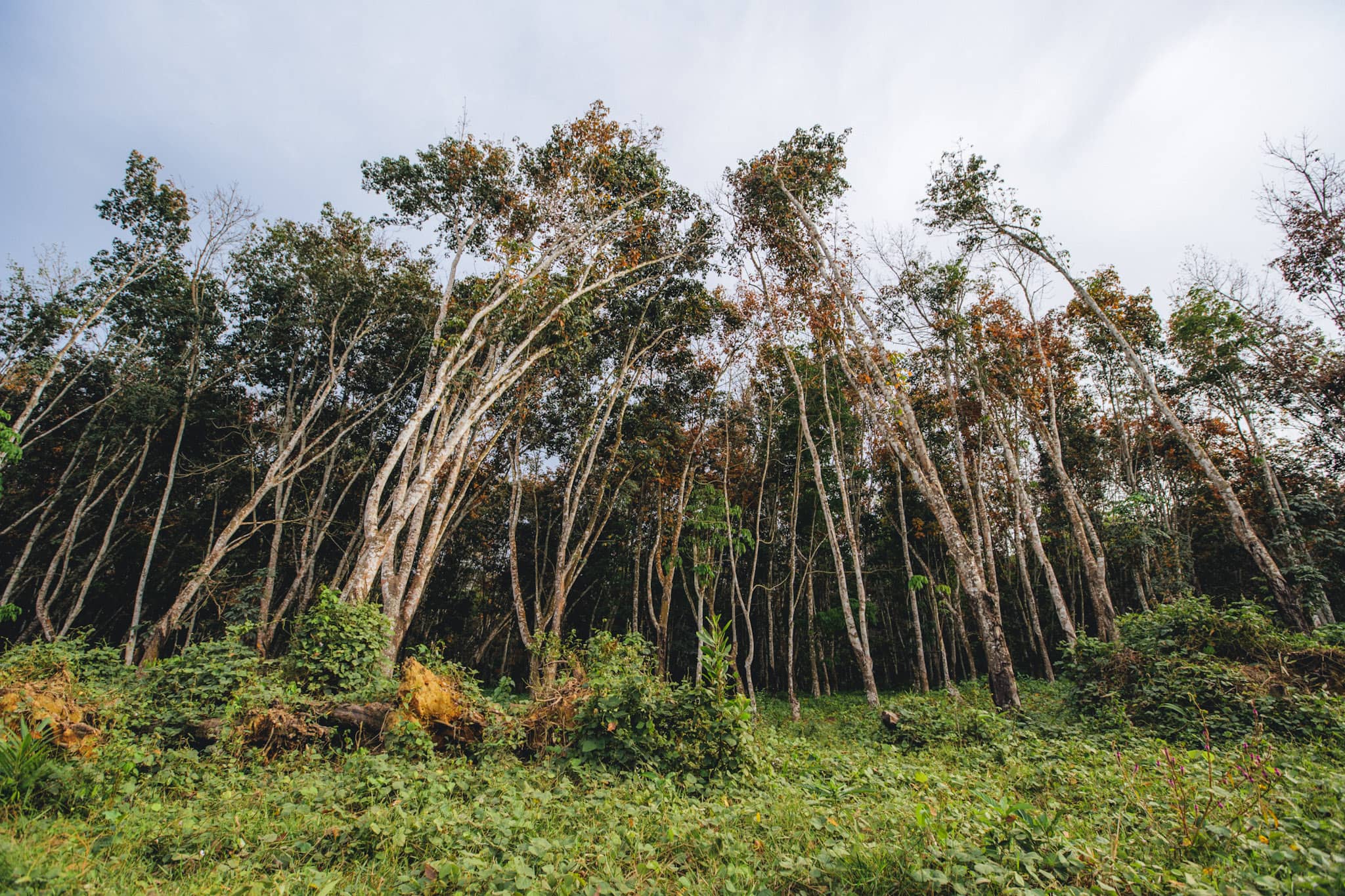
Aside from cocoa, hevea (as in this photo) and palm oil are the most frequent crops in Côte d’Ivoire. Just as devastating as that of cocoa, rubber trees cultivation has been developed at the expense of primary forests in the country.
Photo by Emile DOMINE for the World Bank
Panasonic S1H + Canon EF 16-35mm f/2.8 II
16 mm - f/5.6 - 1/200 s - ISO 200
© AADO MEDIA 2021
Aside from cocoa, hevea (as in this photo) and palm oil are the most frequent crops in Côte d’Ivoire. Just as devastating as that of cocoa, rubber trees cultivation has been developed at the expense of primary forests in the country.
Photo by Emile DOMINE for the World Bank
Panasonic S1H + Canon EF 16-35mm f/2.8 II
16 mm - f/5.6 - 1/200 s - ISO 200
© AADO MEDIA 2021
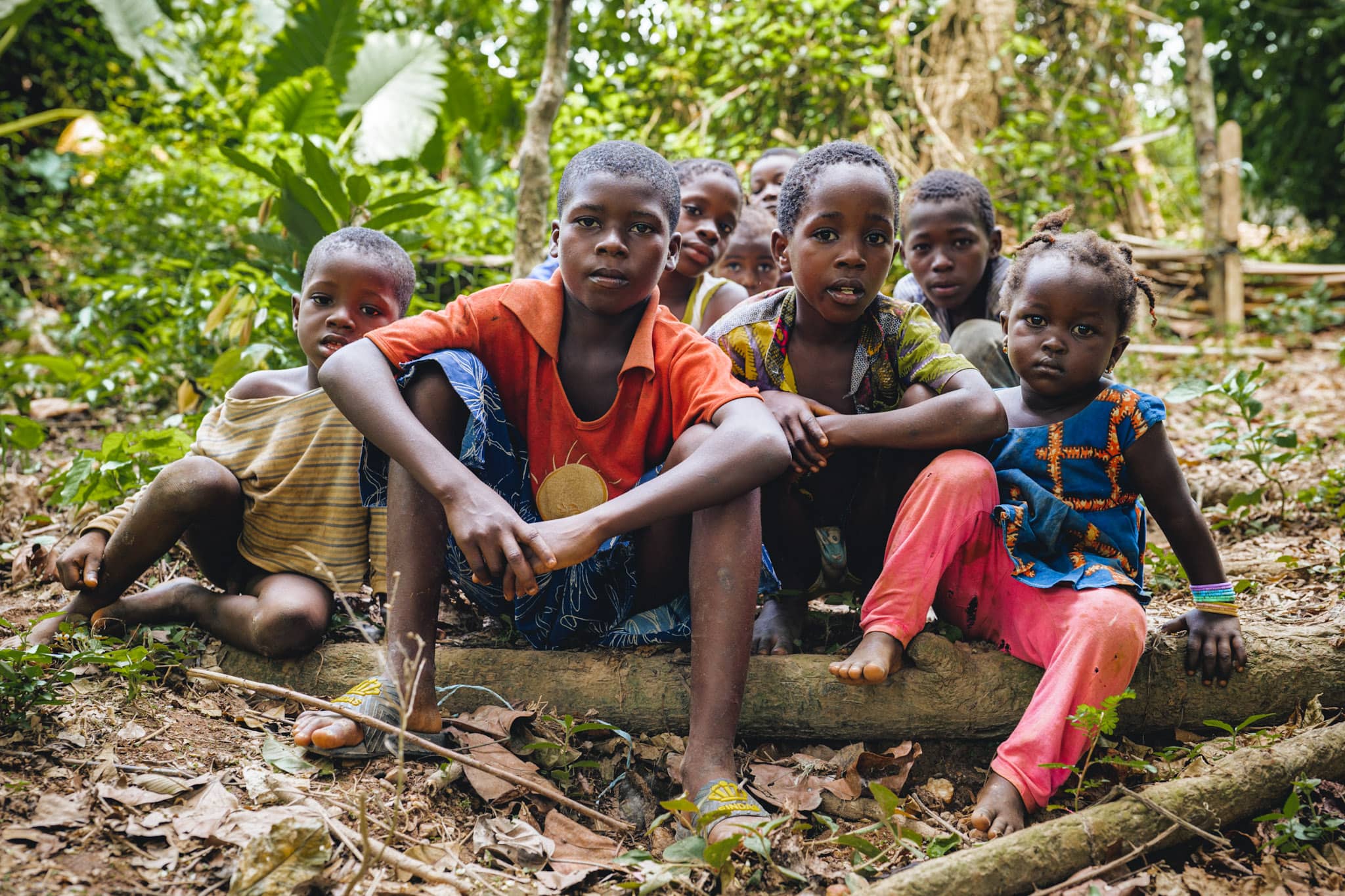
In the cocoa-producing communities of the La Mé region of Côte d’Ivoire, children are born and raised in cocoa plantations. However, in recent years, farmers have been going further and further away from villages to find fertile soil by cutting down protected forest.
Photo by Emile DOMINE for the World Bank
Panasonic S1H + Sigma Art 40mm f/1.4
f/3.5 - 1/125 s - ISO 200
© AADO MEDIA 2021
In the cocoa-producing communities of the La Mé region of Côte d’Ivoire, children are born and raised in cocoa plantations. However, in recent years, farmers have been going further and further away from villages to find fertile soil by cutting down protected forest.
Photo by Emile DOMINE for the World Bank
Panasonic S1H + Sigma Art 40mm f/1.4
f/3.5 - 1/125 s - ISO 200
© AADO MEDIA 2021
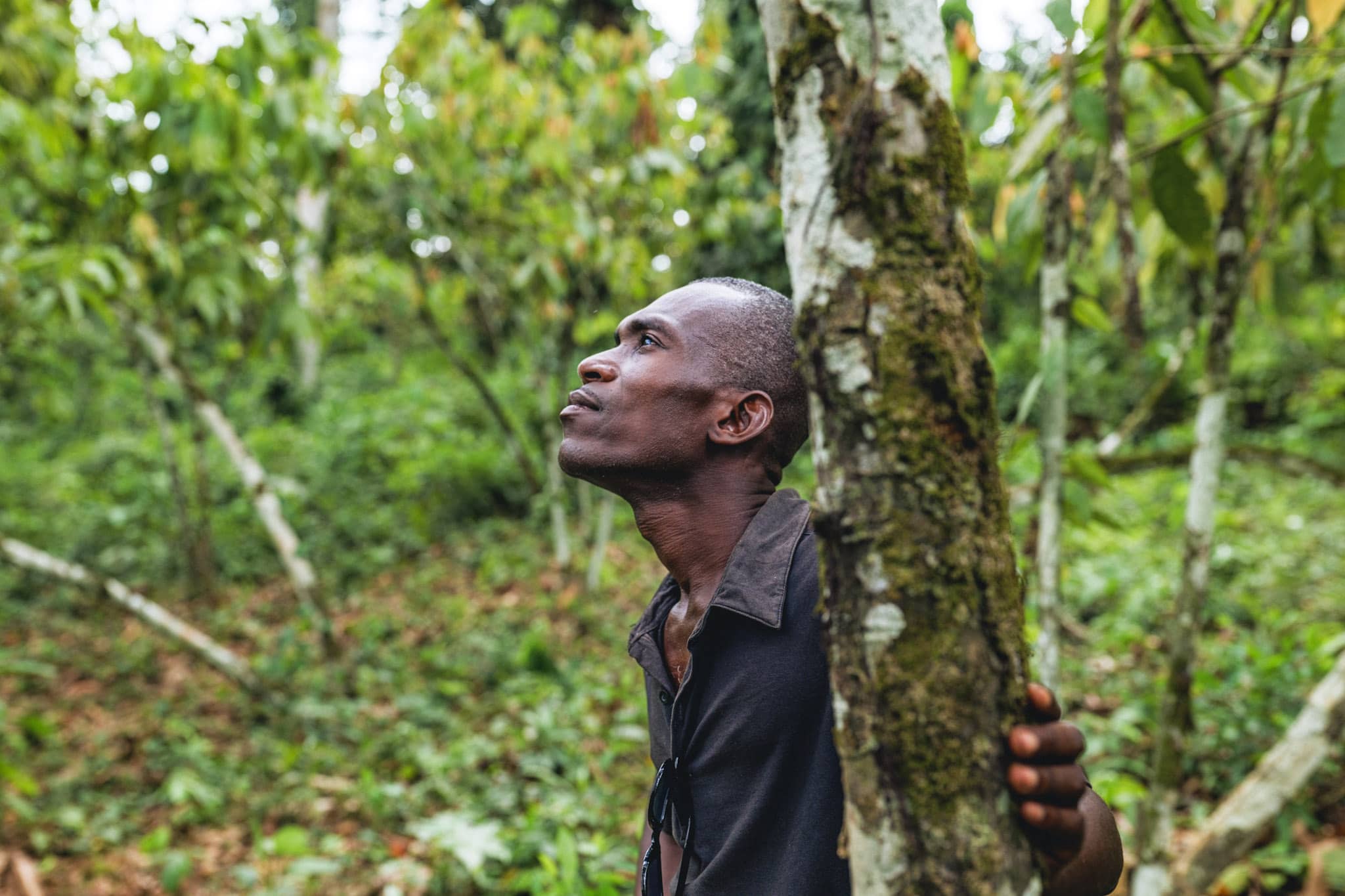
A Ivorian cocoa producer in an old cocoa plot. Thanks to international funding and NGOs, he left the protected forest he was cutting down and started renovating his former plantation with agroforestry techniques.
Photo by Jules DOMINE for the World Bank
Panasonic S1H + Sigma Art 40mm f/1.4
f/3.2 - 1/320 s - ISO 200
© AADO MEDIA 2021
A Ivorian cocoa producer in an old cocoa plot. Thanks to international funding and NGOs, he left the protected forest he was cutting down and started renovating his former plantation with agroforestry techniques.
Photo by Jules DOMINE for the World Bank
Panasonic S1H + Sigma Art 40mm f/1.4
f/3.2 - 1/320 s - ISO 200
© AADO MEDIA 2021
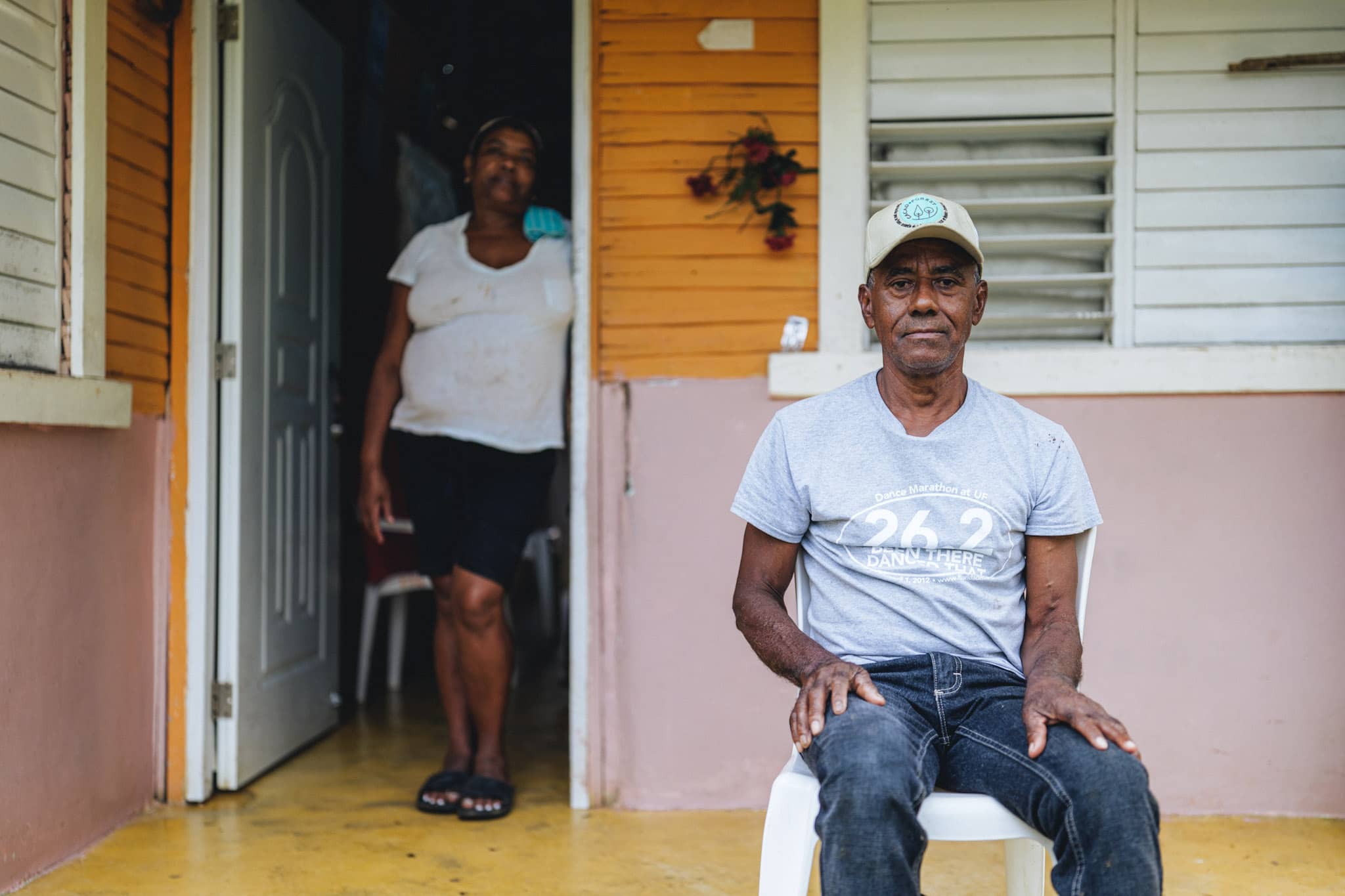
In the Dominican Republic farmers have always grown cocoa in traditional agroforestry systems. This is not, however, taken into account in the price paid to the producers, and younger generations are abandoning the countryside, leaving for the city as rampant poverty plagues their family.
Photo by Emile DOMINE for the World Bank
Panasonic S1H + Sigma Art 40mm f/1.4
f/1.4 - 1/200 s - ISO 200
© AADO MEDIA 2021
In the Dominican Republic farmers have always grown cocoa in traditional agroforestry systems. This is not, however, taken into account in the price paid to the producers, and younger generations are abandoning the countryside, leaving for the city as rampant poverty plagues their family.
Photo by Emile DOMINE for the World Bank
Panasonic S1H + Sigma Art 40mm f/1.4
f/1.4 - 1/200 s - ISO 200
© AADO MEDIA 2021
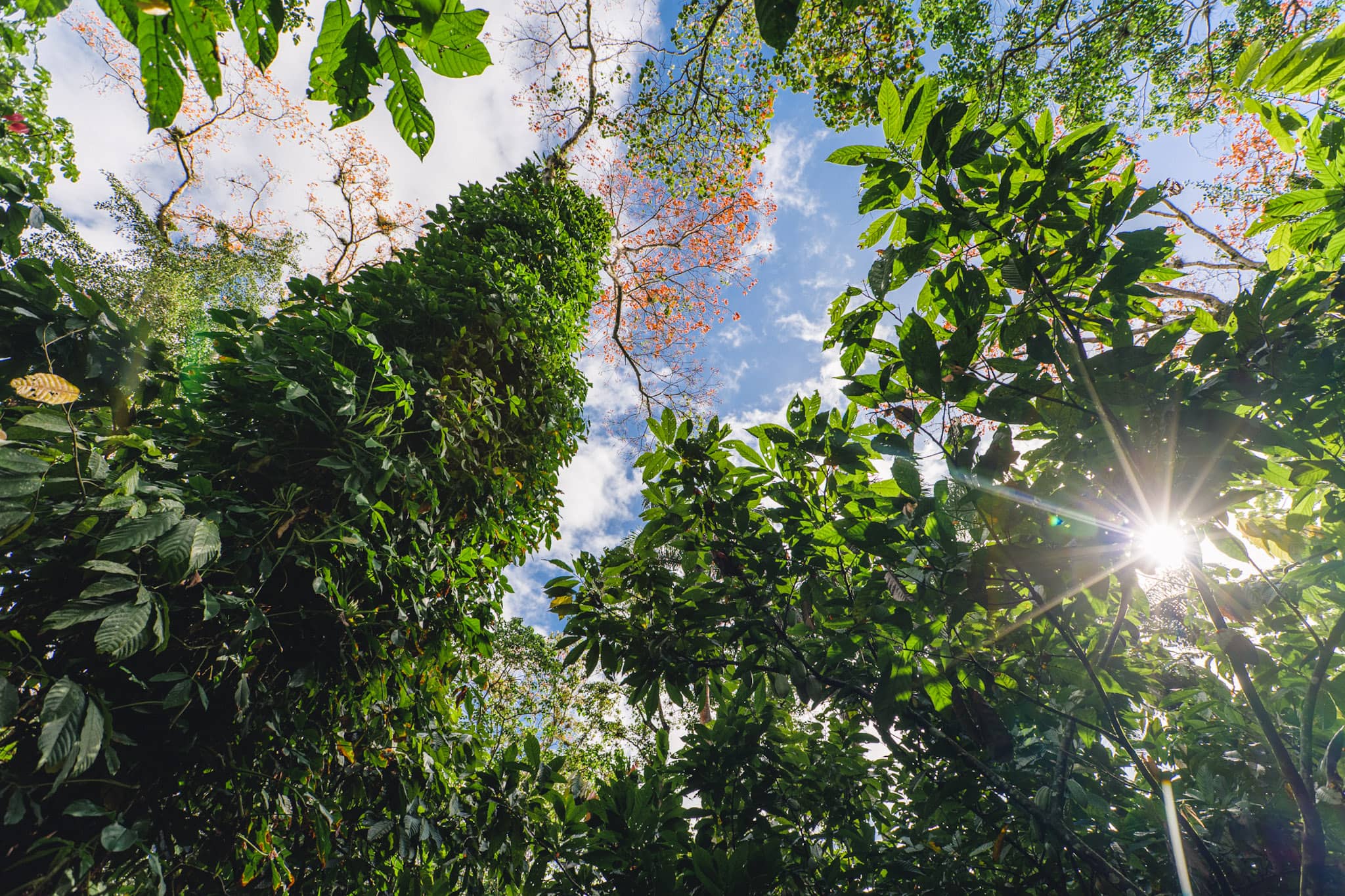
In the Dominican Republic, cocoa is grown in traditional agroforestry systems. Plantations are both towered and interspersed by tall amapola trees, recognizable by their iconic red flowers when the blooming season comes.
Photo by Emile DOMINE for the World Bank
Panasonic S5 + Canon EF 16-35mm f/2.8 II
16 mm - f/5.6 - 1/250 s - ISO 200
© AADO MEDIA 2021
In the Dominican Republic, cocoa is grown in traditional agroforestry systems. Plantations are both towered and interspersed by tall amapola trees, recognizable by their iconic red flowers when the blooming season comes.
Photo by Emile DOMINE for the World Bank
Panasonic S5 + Canon EF 16-35mm f/2.8 II
16 mm - f/5.6 - 1/250 s - ISO 200
© AADO MEDIA 2021
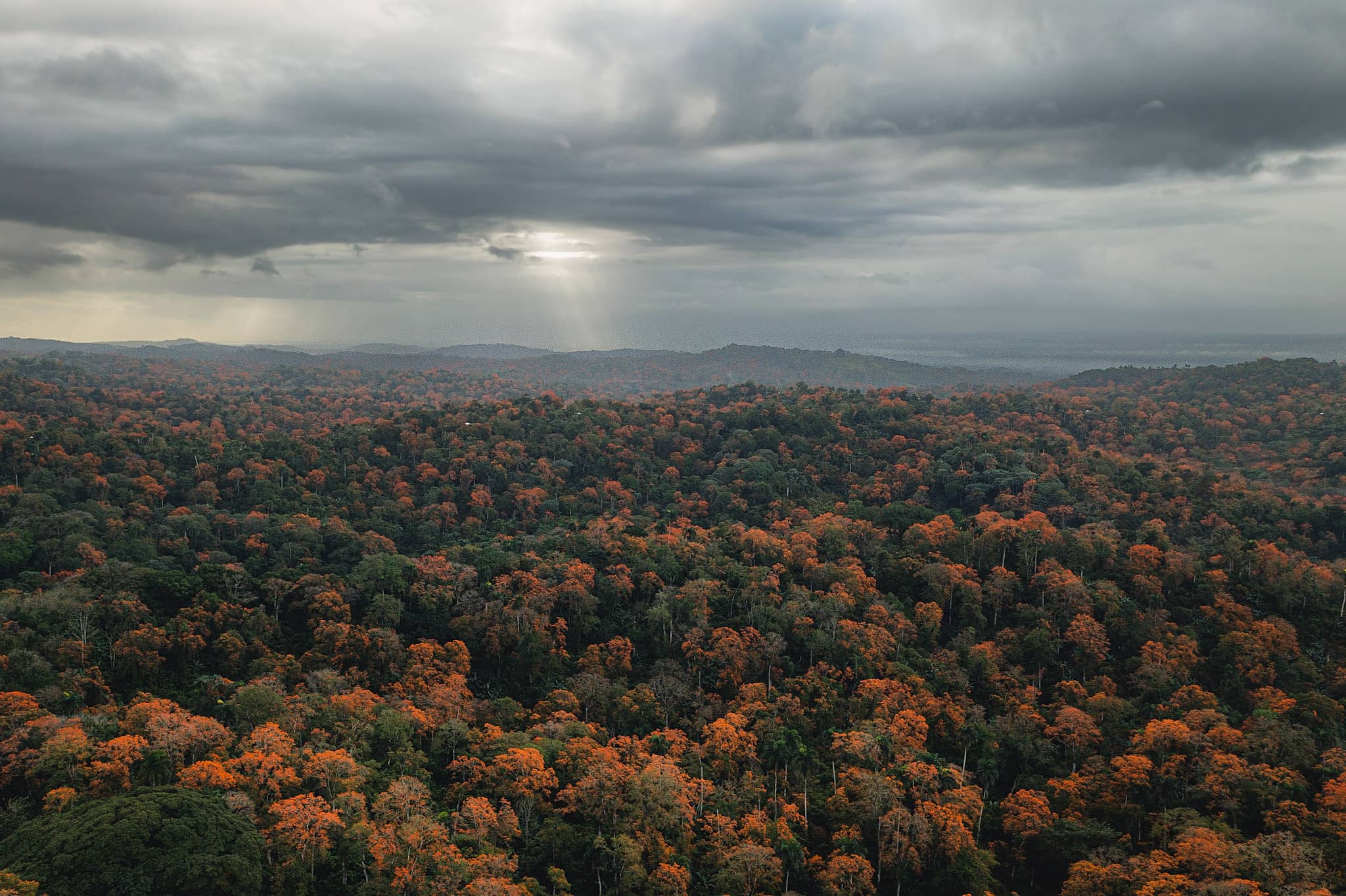
Endless expenses of fieryamapola trees canopy in the Dominican Republic. Under their foliage hides the organic cocoa plantations the local cooperatives are famous for. These "cocoa forests" are also key to the protection of the country’s freshwater resources.
Photo by Emile DOMINE for the World Bank
DJI Mavic 2 Pro + PolarPro VND
f/4 - 1/40 s - ISO 100
© AADO MEDIA 2021
Endless expenses of fieryamapola trees canopy in the Dominican Republic. Under their foliage hides the organic cocoa plantations the local cooperatives are famous for. These "cocoa forests" are also key to the protection of the country’s freshwater resources.
Photo by Emile DOMINE for the World Bank
DJI Mavic 2 Pro + PolarPro VND
f/4 - 1/40 s - ISO 100
© AADO MEDIA 2021
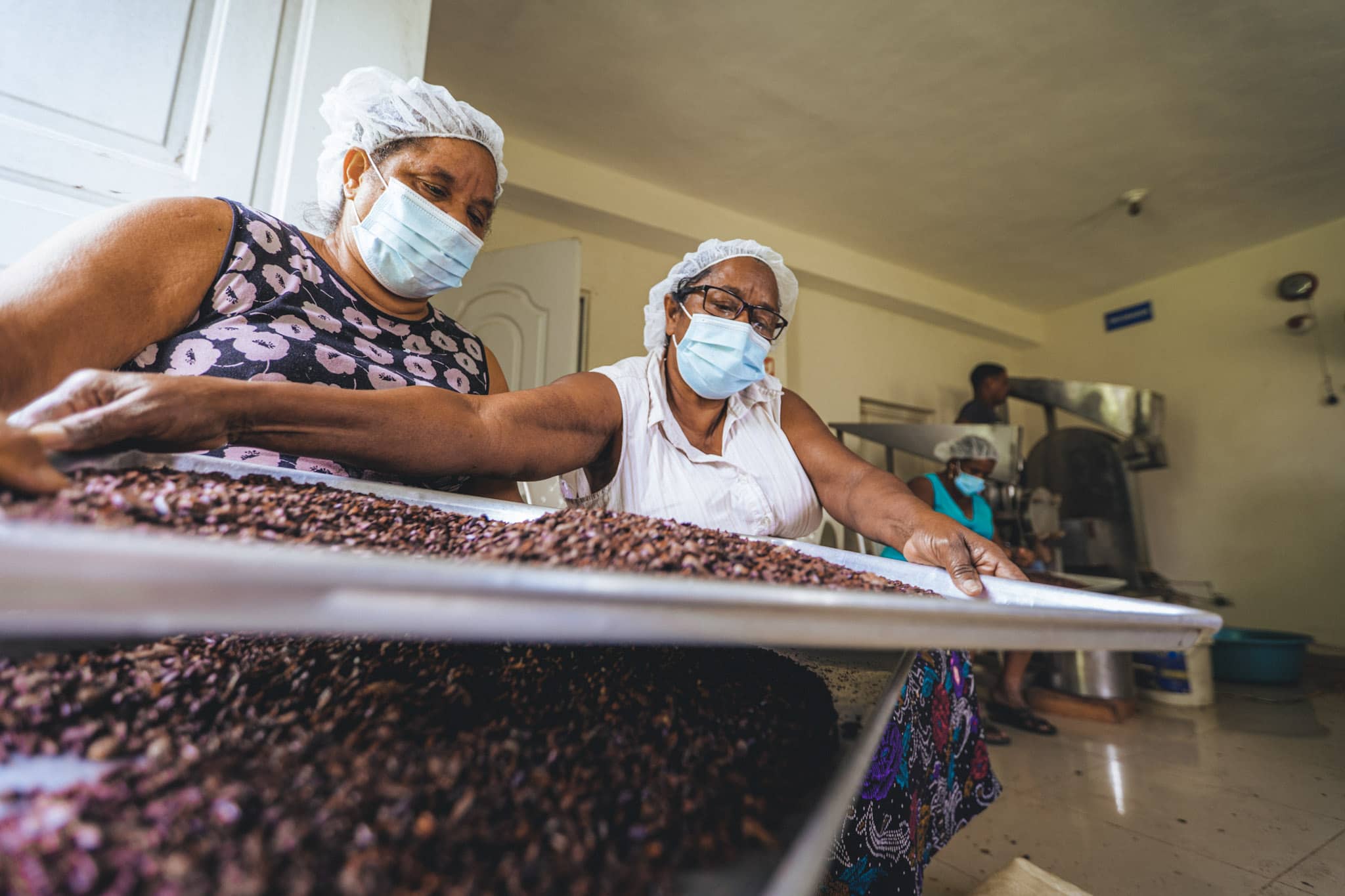
Whereas most of the cocoa produced in the Dominican Republic is exported, a few local businesses transform cocoa beans for local consumption. Here, a small chocolate factory entirely ran by women in the Dominican countryside.
Photo by Jules DOMINE for the World Bank
Panasonic S5 + Canon EF 16-35mm f/2.8 II
16 mm - f/2.8 - 1/200 s - ISO 1600
© AADO MEDIA 2021
Whereas most of the cocoa produced in the Dominican Republic is exported, a few local businesses transform cocoa beans for local consumption. Here, a small chocolate factory entirely ran by women in the Dominican countryside.
Photo by Jules DOMINE for the World Bank
Panasonic S5 + Canon EF 16-35mm f/2.8 II
16 mm - f/2.8 - 1/200 s - ISO 1600
© AADO MEDIA 2021
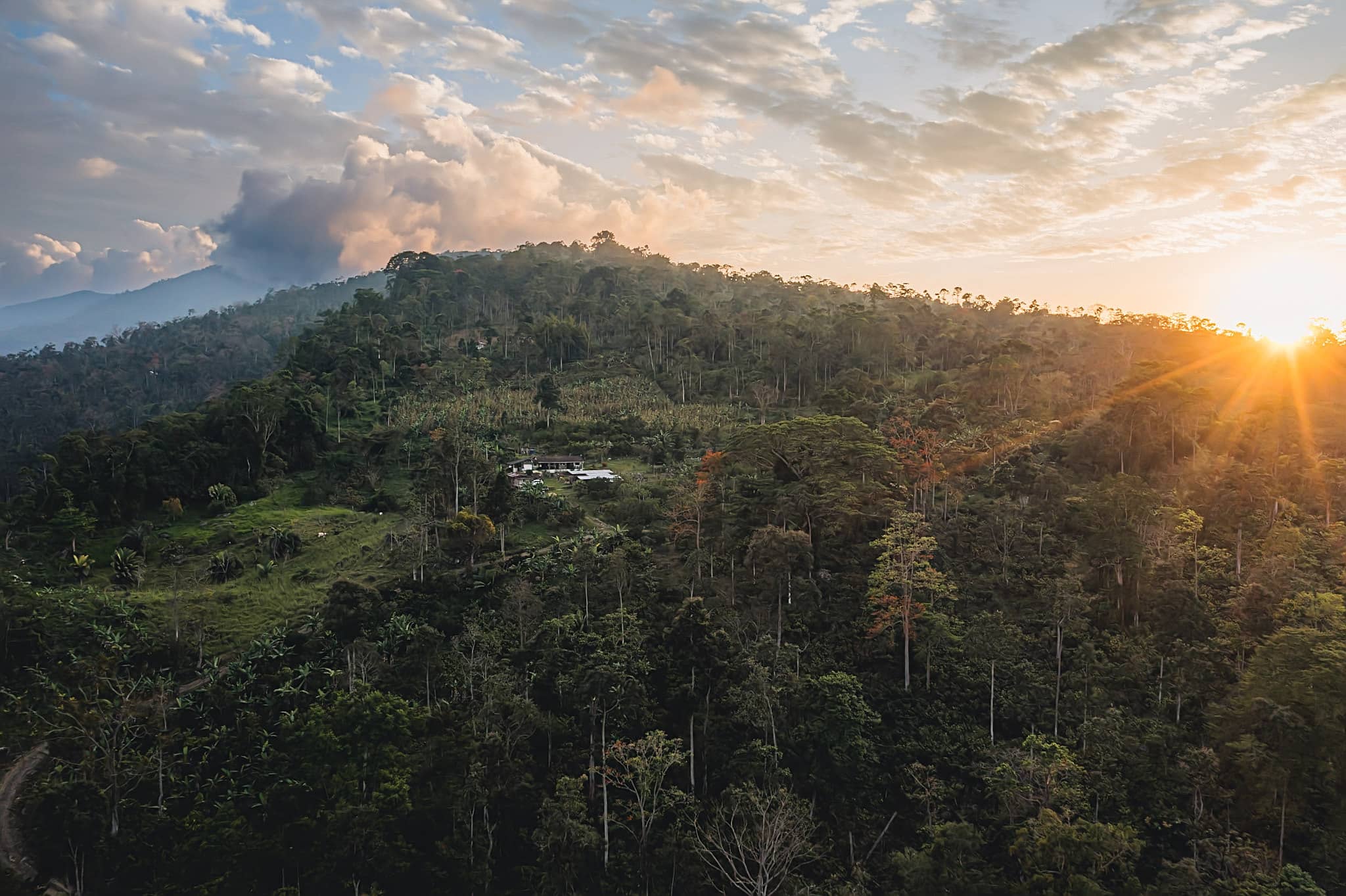
A remote cocoa finca in the Santander region of Colombia, where cocoa is also exclusively grown in traditional agroforestry systems.
Photo by Jules DOMINE for the World Bank
DJI Mavic 2 Pro + PolarPro VND
f/5.6 - 1/50 s - ISO 100
© AADO MEDIA 2021
A remote cocoa finca in the Santander region of Colombia, where cocoa is also exclusively grown in traditional agroforestry systems.
Photo by Jules DOMINE for the World Bank
DJI Mavic 2 Pro + PolarPro VND
f/5.6 - 1/50 s - ISO 100
© AADO MEDIA 2021
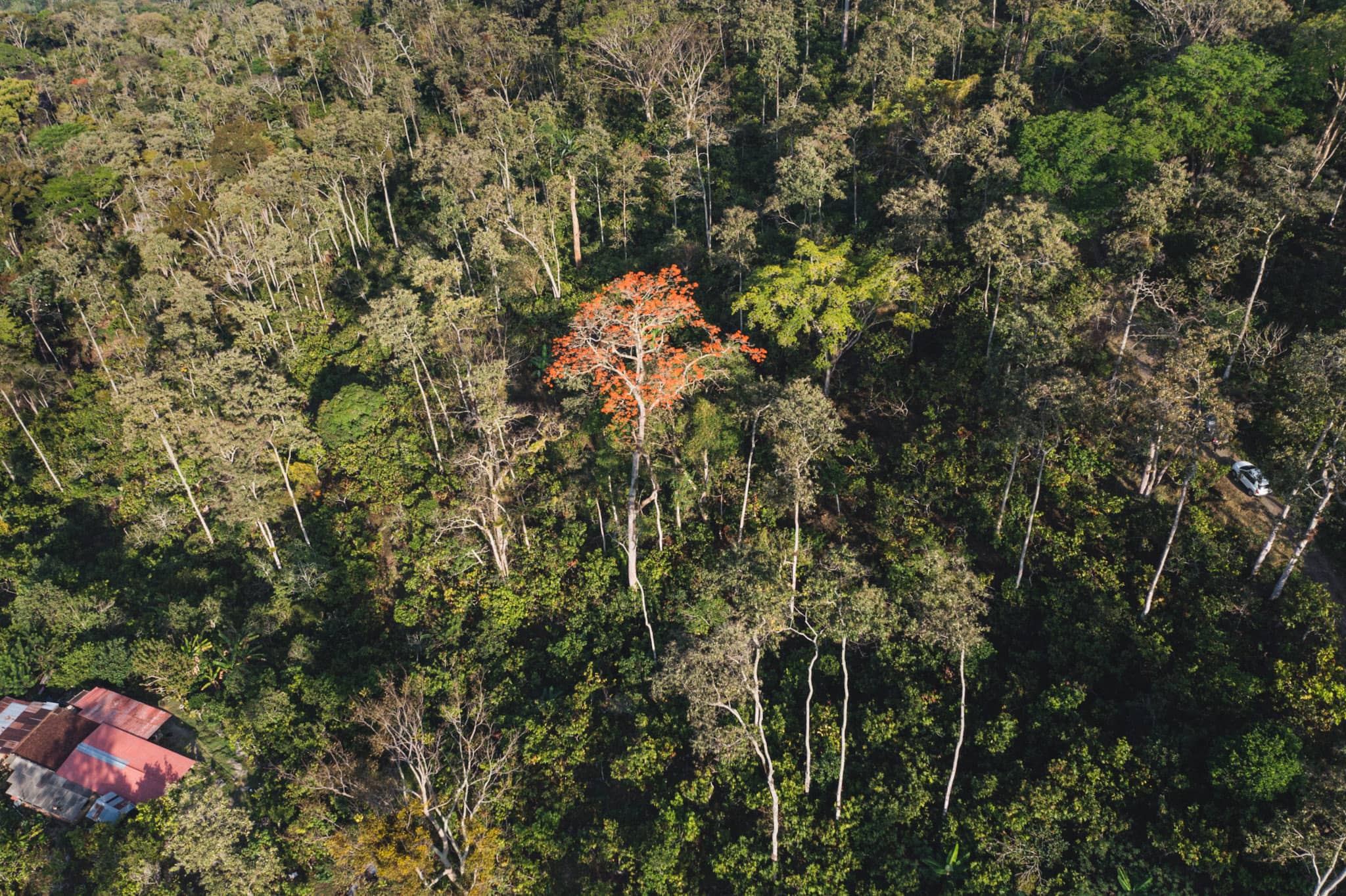
The association of tall trees and, under them of cocoa plantations in traditional agroforestry systems is clearly visible in this drone shot from the Santander region of Colombia.
Photo by Jules DOMINE for the World Bank
DJI Mavic 2 Pro + PolarPro VND
f/5 - 1/40 s - ISO 100
© AADO MEDIA 2021
The association of tall trees and, under them of cocoa plantations in traditional agroforestry systems is clearly visible in this drone shot from the Santander region of Colombia.
Photo by Jules DOMINE for the World Bank
DJI Mavic 2 Pro + PolarPro VND
f/5 - 1/40 s - ISO 100
© AADO MEDIA 2021
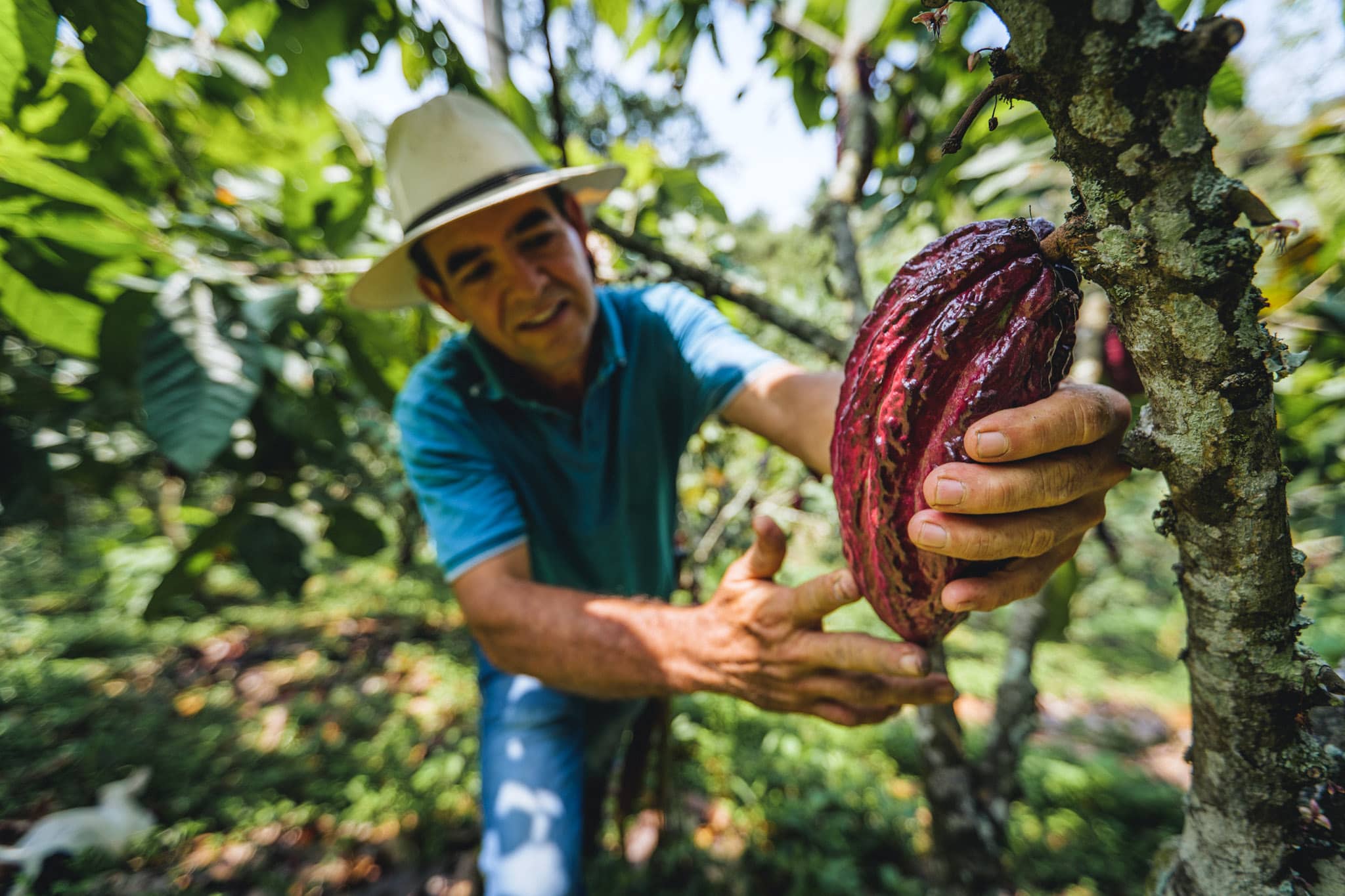
Luis Ernesto Esteban, a cocoa producer from San Vicente de Chucurí in the Santander region of Colombia, checks his future harvest in his agroforestry plantation.
Photo by Emile DOMINE for the World Bank
Panasonic S5 + Canon EF 16-35mm f/2.8 II
16 mm - f/2.8 - 1/640 s - ISO 200
© AADO MEDIA 2021
Luis Ernesto Esteban, a cocoa producer from San Vicente de Chucurí in the Santander region of Colombia, checks his future harvest in his agroforestry plantation.
Photo by Emile DOMINE for the World Bank
Panasonic S5 + Canon EF 16-35mm f/2.8 II
16 mm - f/2.8 - 1/640 s - ISO 200
© AADO MEDIA 2021
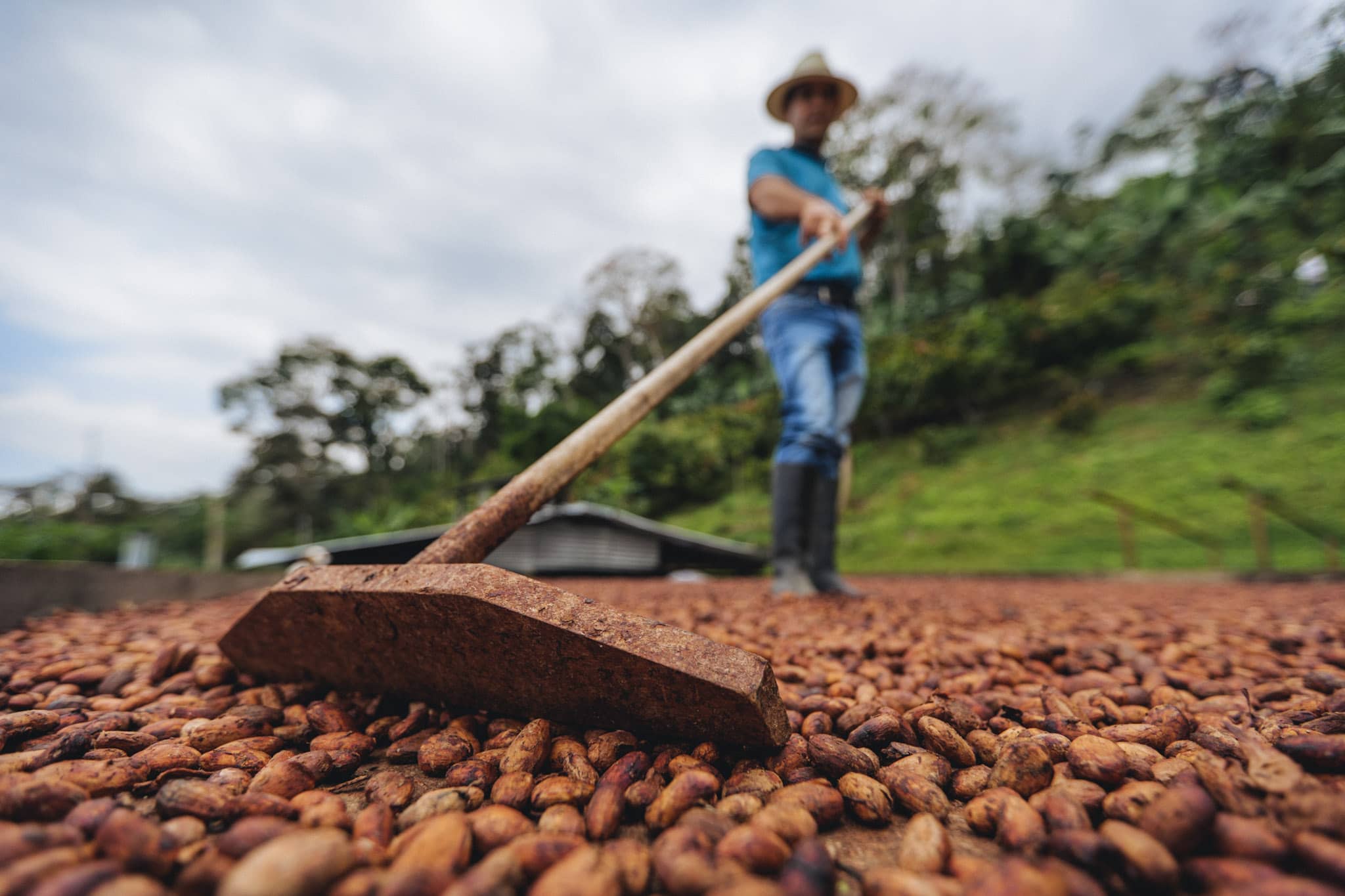
Once fermentation is finished, Luis Ernesto Esteban puts his beans to dry out in the sun, on top of his finca. A clever mechanism enables him to quickly draw a mobile roof over the beans if rains comes.
Photo by Emile DOMINE for the World Bank
Panasonic S5 + Canon EF 16-35mm f/2.8 II
16 mm - f/2.8 - 1/2000 s - ISO 200
© AADO MEDIA 2021
Once fermentation is finished, Luis Ernesto Esteban puts his beans to dry out in the sun, on top of his finca. A clever mechanism enables him to quickly draw a mobile roof over the beans if rains comes.
Photo by Emile DOMINE for the World Bank
Panasonic S5 + Canon EF 16-35mm f/2.8 II
16 mm - f/2.8 - 1/2000 s - ISO 200
© AADO MEDIA 2021
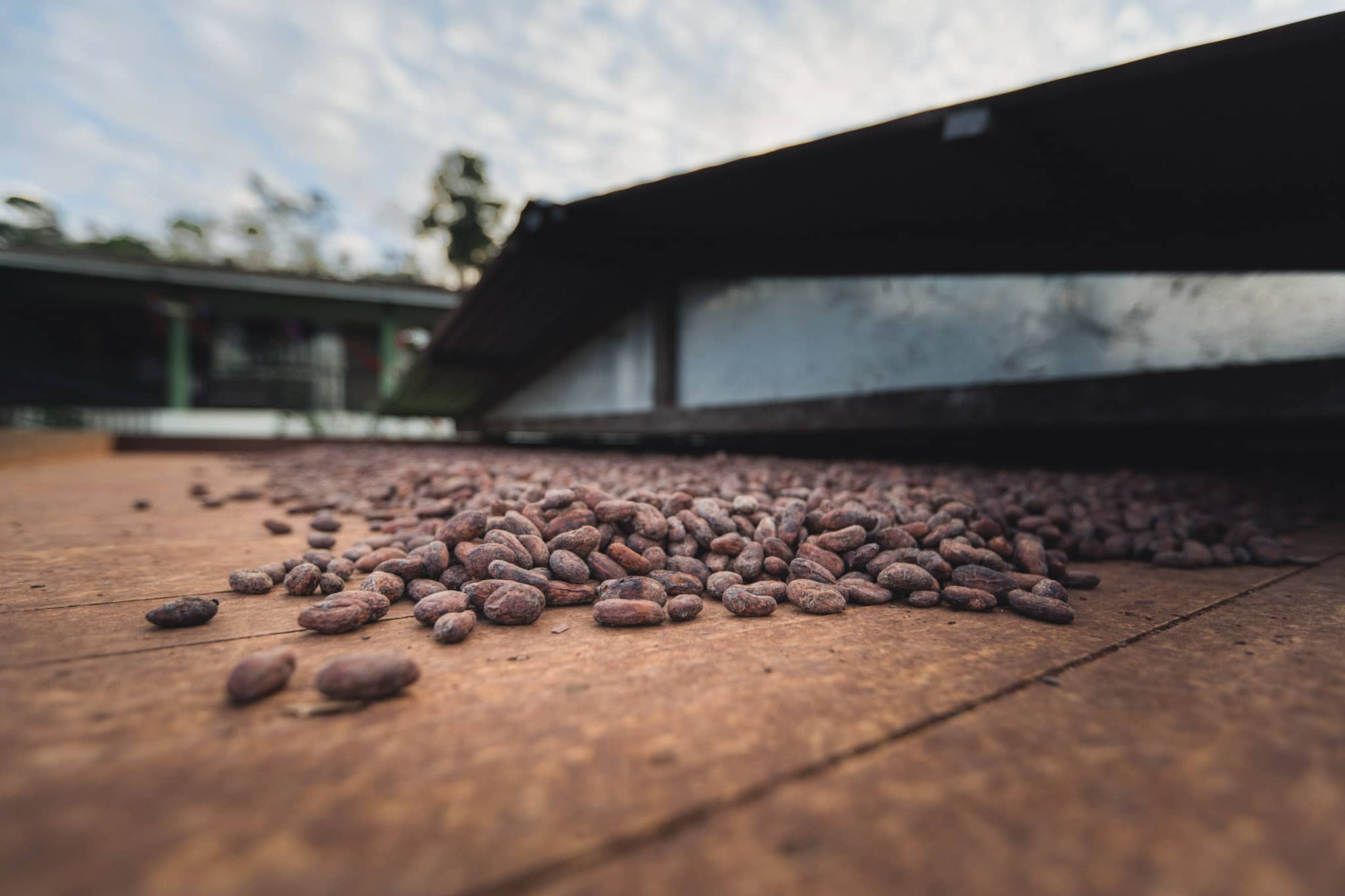
Cocoa beans drying on a roof in Santander. When dusk comes, the mobile roof is drawn back over the beans to prevent humidity from sinking in the beans at night.
Photo by Emile DOMINE for the World Bank
Panasonic S1H + Canon EF 16-35mm f/2.8 II
18 mm - f/2.8 - 1/320 s - ISO 200
© AADO MEDIA 2021
Cocoa beans drying on a roof in Santander. When dusk comes, the mobile roof is drawn back over the beans to prevent humidity from sinking in the beans at night.
Photo by Emile DOMINE for the World Bank
Panasonic S1H + Canon EF 16-35mm f/2.8 II
18 mm - f/2.8 - 1/320 s - ISO 200
© AADO MEDIA 2021